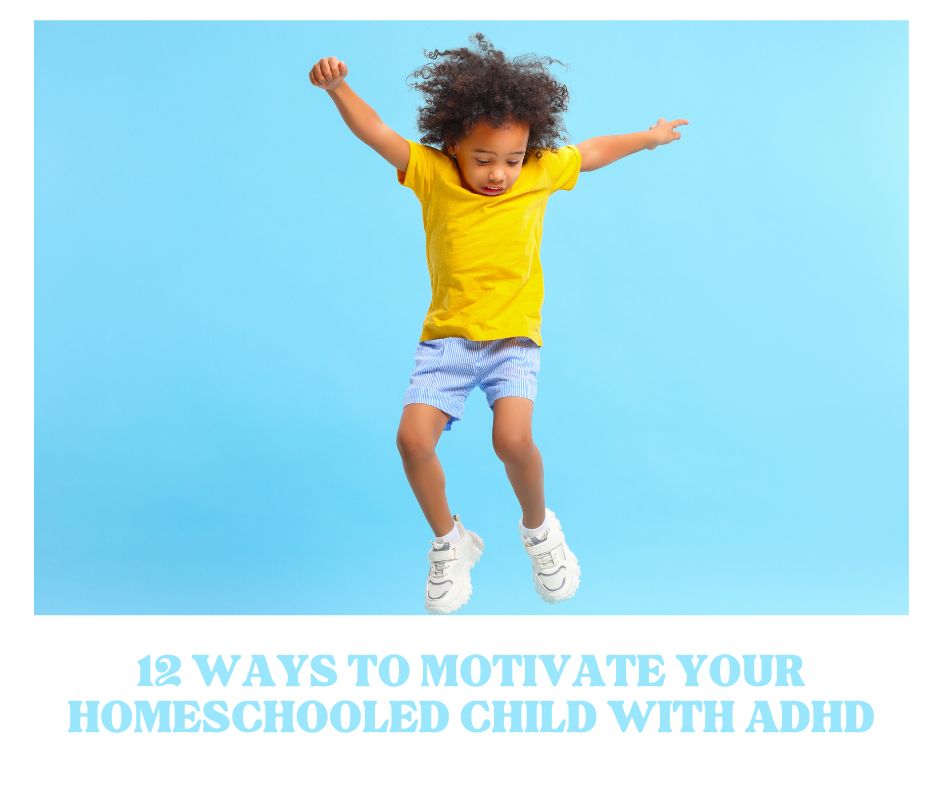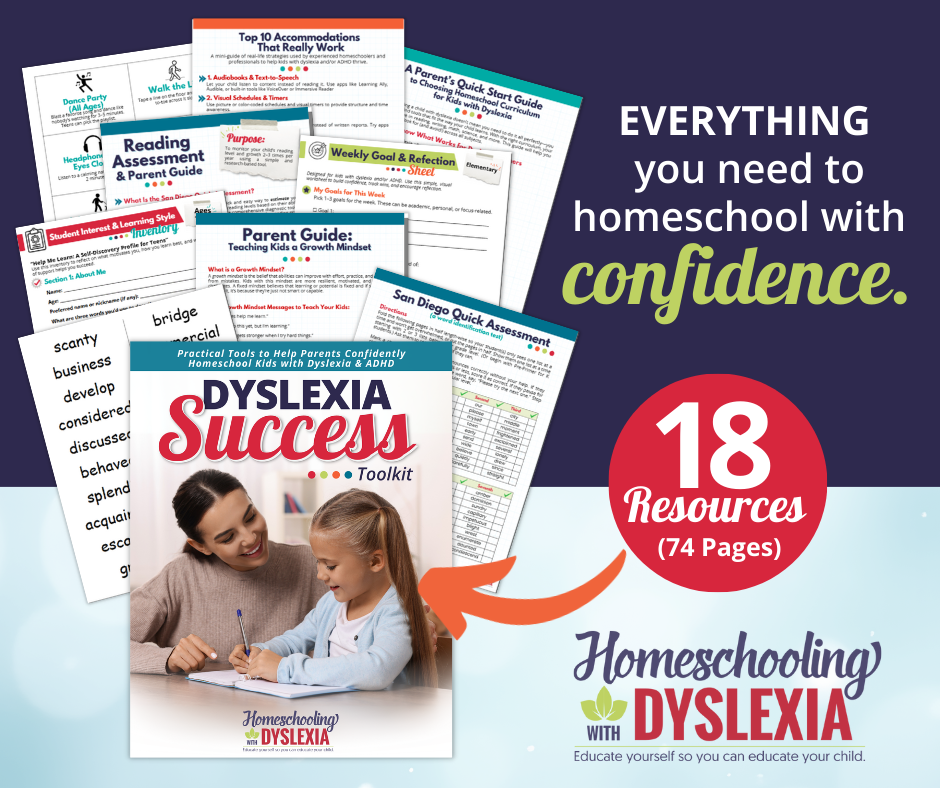As a homeschool parent, motivating a child with ADHD can feel like pushing a boulder uphill—only for it to roll right back down the moment you look away. You know your child is bright, creative, and full of potential. But getting them to focus, stay on task, and finish their work? That’s the real challenge.
If your ADHD homeschooler is struggling to stay motivated or put in consistent effort, you’re not alone—and there are solutions. Below are 12 practical, brain-based strategies to help your child engage with learning, develop confidence, and build better work habits.

1. Use Timers to Create Urgency
Kids with ADHD often struggle with time blindness, making it hard for them to gauge how long something takes—or feel motivated to begin. A timer gives their brain a sense of urgency and structure.
Try using a visual timer like a Time Timer or even a sand timer. Challenge them with short sprints:
“Let’s see how much you can get done in 10 minutes!”
This turns boring tasks into races against the clock—and gives them a finish line in sight.
Timers also let minds that find a task boring know how much time they have left to work which can ease the burden of the task.
2. Break Work Into Bite-Sized Chunks
ADHD brains are easily overwhelmed by big tasks. Breaking assignments into smaller steps makes things feel doable and increases the chance of follow-through.
Instead of saying, “Write a paragraph,” break it into:
- Think of a topic
- Write the first sentence
- Take a 2-minute break
- Write two more sentences
Short chunks = more momentum and less resistance.
3. Start With High-Interest Subjects
Motivation snowballs. Starting the day with a subject your child enjoys can build energy for the harder stuff later.
Let them help decide the order of the day’s tasks:
“Want to start with science or math today?”
When kids have a say, they’re more likely to buy in.
4. Use Movement as a Focus Tool
ADHD brains need motion. Built-in movement breaks help reset the nervous system and improve focus.
Try:
- Jumping jacks between subjects
- 10-minute trampoline breaks
- “Wall push-ups” for fidgety learners
- Dancing to a favorite song between assignments
A quick burst of movement is often better than a long lecture.
5. Incorporate Special Interests
Tapping into your child’s passions is one of the most powerful motivators. Whether it’s Minecraft, Pokémon, animals, or airplanes—use it!
Examples:
- Create math problems using Pokémon characters
- Let them write a story about their favorite video game
- Choose science topics based on their current obsession
It’s not bribery—it’s brain chemistry.
6. Offer Immediate, Positive Feedback
Kids with ADHD often struggle with delayed gratification. Immediate rewards—especially praise—go a long way.
Try:
“I saw how hard you tried on that, even when it got tricky. That’s awesome effort.”
You can also use points, stickers, or a reward jar—just be consistent and focus on effort over results.
7. Make School Feel Like a Game
Gamification turns boring routines into fun challenges.
Examples:
- “Level up” for completing tasks
- Earn badges or tokens for effort
- Beat their “best time” on math facts
A little friendly competition—even with themselves—keeps things fun and motivating.
Like this idea? See this post with 8 Ways to Gamify Your Home and Homeschool.
8. Use Visual Schedules and Clear Goals
Kids with ADHD do best when they can see what’s expected and what’s next. Visual tools reduce anxiety and provide structure.
Use:
- “First/Then” boards (e.g., “First reading, then snack”)
- Daily checklists
- Dry erase boards with the day’s plan
Knowing what’s ahead helps reduce resistance.
For tons of tools for helping kids with ADHD be more organized, check out my parent education course: Executive Function: Teaching Your Dyslexic Child to Organize Their Thoughts, Personal Space and Time
9. Minimize Distractions
Set your child up for success by creating a focused workspace.
Tips:
- Use noise-canceling headphones or soft instrumental music
- Clear clutter from their desk
- Use visual dividers or folders to block out distractions
Sometimes a calm space is the best motivator.
10. Let Them Have a Say
Autonomy is incredibly motivating. Give your child some control—where they work, how they complete an assignment, or even which pencil they use.
Offer choices like:
- “Do you want to do school in the kitchen or outside today?”
- “Would you rather do handwriting with a pen or marker?”
Even small decisions help them feel empowered.
For a list of ways to offer kids more choice in their homeschool days, read this post: 20 Ways to give kids more choices.
11. Use Natural Consequences
Sometimes, the best motivation is letting natural consequences play out—without lectures or punishments.
If they delay their work, they might miss out on free time or a planned activity. Calmly say:
“School took longer today, so we won’t have time for the park. Let’s try again tomorrow.”
Keep it matter-of-fact, not punitive. Kids learn best through real-world cause and effect.
12. Set Goals and Celebrate Progress
Help your child set weekly goals and reflect on their wins.
Examples:
- “This week I want to finish all my math pages by Friday.”
- “I want to try staying focused for 10 minutes without getting up.”
At the end of the week, celebrate with a special treat, extra screen time, or a high-five fest. Effort counts—and acknowledging it builds internal motivation.
Homeschooling a child with ADHD isn’t about pushing harder—it’s about working smarter. Our kids aren’t lazy or unmotivated—they just need support that matches how their brains are wired.
With structure, choices, creativity, and lots of encouragement, you can help your child develop stronger focus, work habits, and confidence.
Other ADHD Resources
Posts
Effective Rewards for Kids with ADHD
Homeschooling a Child With Inattentive ADHD
Books
How NOT to Murder Your ADHD Kid: Instead learn how to be your child’s own ADHD coach
My Online Course
The ADHD Intensive: A 6-video ‘intensive’ where you will receive targeted, research-based information on:
1) What the underlying causes of ADHD are and how they result in the typical ADHD behaviors you are seeing at home and school.
2) Tons of strategies (you may never have heard about) to increase focus.
3) Understand your kids’ struggles with organization and strategies for teaching organization.
4) Methods and strategies to improve learning at home and at school.
5) Methods and strategies for improving your child’s social skills.
6) Methods and strategies for improving our kids’ emotional regulation.
This course is completely online and contains 6 teaching videos, PDF downloads for note-taking, and additional resources.






0 Comments